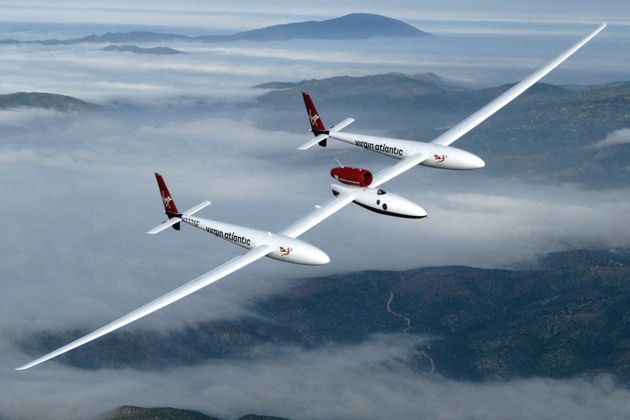Spotters Wanted to Track Historic GlobalFlyer Effort

Depending on weather conditions, the Virgin Atlantic GlobalFlyer aircraft is to wing its way into the sky this month from the Salina Municipal Airport in Salina, Kansas. The goal for plane and pilot, adventurer Steve Fossett, is to set a world record for the first solo, non-stop, non-refueled circumnavigation of the world.
Officials are looking for spotters to track the flight (information below). Meanwhile, for the moment the attempt is at "Condition Red" status through Feb. 9.
"Please be advised due to adverse ground conditions the Virgin Atlantic Global Flyer will not fly prior to February 10 or 11," said Debbie Dar, a spokeswoman for Virgin Management and the around-the-world flight.
The attempt was originally scheduled to take place the first week of January. But due to the position of the global river of air called the jet stream, the plane's liftoff date was pushed back by nearly a month into February.
Experimental communications gear
The aircraft flew in from its birthplace at Scaled Composites, out of the Mojave Airport in California early last month. It is now being housed at the Salina Municipal Airport under tight security in one of the hangars until conditions are right for the plane's takeoff.
Preparations are picking up. When the jet stream is in the right location and weather conditions are optimal, Fossett will start his global hop, now estimated to take about 66 hours.
Sign up for the Live Science daily newsletter now
Get the world’s most fascinating discoveries delivered straight to your inbox.
The GlobalFlyer was recently equipped with a new experimental communications system. That gear will give the world a very close look at the record flight.
The system is being tested for NASA. Part of the equipment was developed as a Mission Termination System that allows for the location and shooting down of an incoming rocket - say for example, launched from a terrorist. In this case, the system is set to transmit live video from the GlobalFlyer during the flight.
Wanted: spotter stations
Project officials are on the lookout for those willing to look up. You might be an amateur astronomer, run a university observatory, or be a missile tracking specialist, whatever - Virgin Atlantic GlobalFlyer is creating a network of "Spotter Stations" who can help track the craft as it attempts to make history.
Can you see 45,000 feet ... straight up? If so, your observing acumen is wanted. The aircraft will be flying at approximately that altitude. It will be in darkness for much of its flight. Those with the appropriate technology could take video or still images for rebroadcast over the web, to bring those sightings to the viewing world using the Internet.
The Virgin Atlantic GlobalFlyer is currently planning to pass over or near the following major cities on its round the world flight: Montreal, London, Paris, Rome, Cairo, Karachi, Shanghai, Tokyo, Honolulu, Los Angeles and Chicago.
Information for potential spotters is available at Spotters@virginatlanticglobalflyer.com
To apply, describe what technical capability you have available, and what support and commitment you will be able to give during the flight attempt. Project officials say they reply to applicants with more details.

Leonard David is an award-winning space journalist who has been reporting on space activities for more than 50 years.









